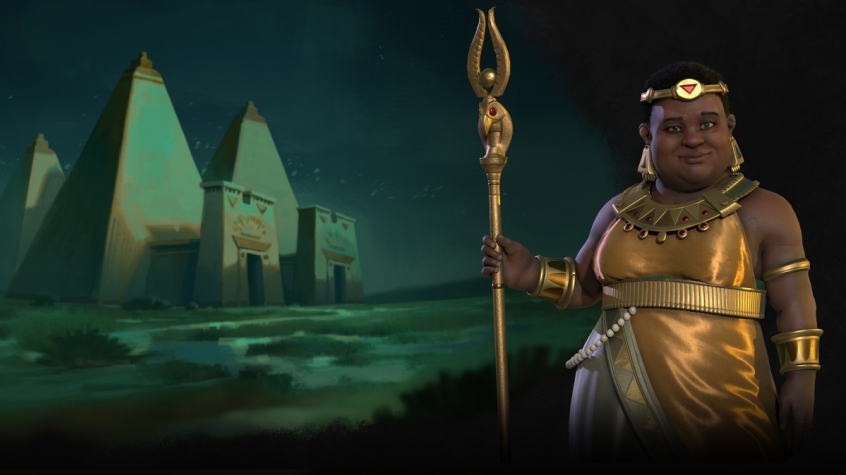
Firaxis and 2K Games announced today that a new civilization is headed to the empire-building game "Sid Meier's Civilization VI." Nubia, led by its queen, Amanitore, will be included in the game's upcoming downloadable content (DLC).
While the DLC has not been given a price nor a release date, details of the new civilization's unique traits, units and buildings were shared by the game via its YouTube channel. Nubia's unique ability is called "Ta-Seti," or "Land of the bow," which gives bonus production to ranged units while also increasing the experience that those units gain. Mines also gain bonus production or gold, depending on the tile it's built on.
For its unique unit, Nubia has the Pítati archer, an ancient-era unit which is a faster and more powerful version of the archer it replaces. Nubian Pyramids will be available as the civilization's unique tile improvement. They can be built on desert, desert hill, or floodplain tiles. They provide additional faith and bonus yield that vary depending on the adjacent districts. If next to the city center, the Nubian Pyramids give extra food.
Amanitore's ability,"Kandake of Meroe," or "Queen of Meroe," gives her civilization bonus production toward building districts. This is further improved by having Nubian Pyramids adjacent to the city center. Her palace, Jebel Berkal, which is a World Heritage Site in modern day Sudan, is also featured in the game.
The DLC will also include the scenario name "Gifts of the Nile," where Nubia will compete against Egypt for control of the Nile River.
Amanitore was one of the last great builders of the Kushitic Kingdom of Meroë, located between the Nile and Atbarah rivers. During her reign, which was the most prosperous time for the Kushites, numerous buildings, temples, and water reservoirs were built. Aside from that, around 200 Nubian Pyramids were erected during that time. Nubian Pyramids differ from their Egyptian counterparts with their more narrow bases and sides that rise at steeper angles.













